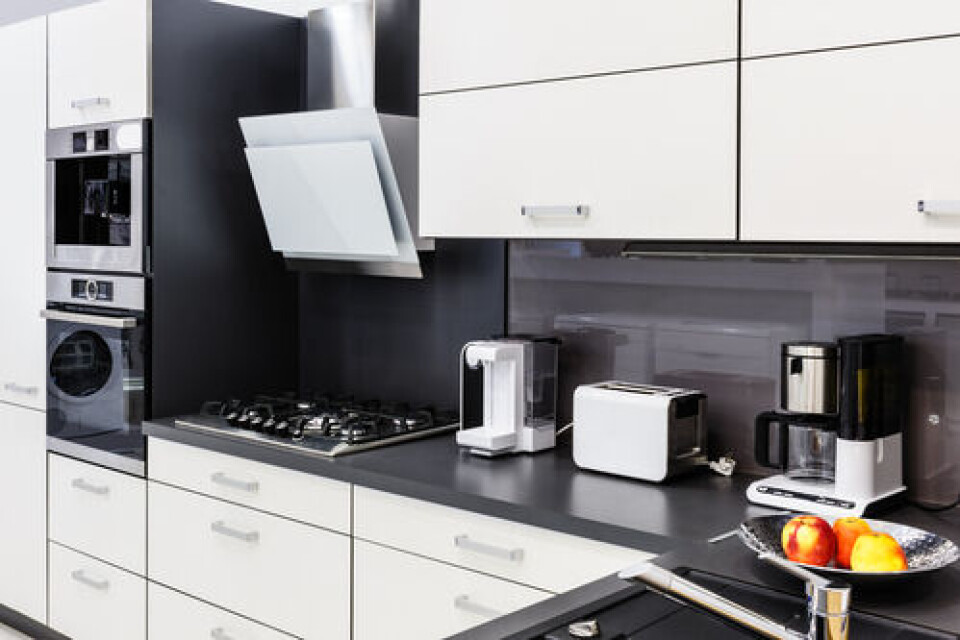-
The ‘windscreen mafia’: Drivers in France warned of major repair scam
Scams include offering ‘free gifts’ that never arrive, and charging extortionate prices
-
Proposal to make homeowners pay back state renovation aid if they sell within ten years
The amount repayable drops for every year the owners remain in the home
-
Can UK car insurance be extended to provide cover in France?
Standard policies last for 90 to 180 days
Should I include appliances in a French house insurance estimate?
When taking out a home cover policy, you are asked to calculate the approximate value of the property

Reader Question: When estimating the value of one's French house/apartment contents for insurance purposes do you include major fixtures and fittings such as kitchen units, fitted kitchen appliances, bathroom basins and taps, heating and air conditioning systems?
The standard French house insurance policy is called assurance multirisques habitation, and covers the cost of repairs or rebuilding necessitated by natural disasters, fire, theft, explosions, floods and more as well as compensation for the loss/damage relating to fixtures, fittings and contents.
When taking out a French house insurance policy, the insurer will have to establish an estimate of the value of your home and its contents, if they had to be completely reconstructed/replaced.
This estimate is called la valeur d’assurance (the insurance value) and should be provided to the insurance company – if required – by the person taking out the policy. You do not necessarily have to provide detailed figures though, if you can, it may help.
To calculate the cost of a full reconstruction of the property, the insurer will typically ask for its surface area, the materials used to build it and details of its layout, and will use this information to work out an estimate. You just need to answer as fully as you can.
As for the contents, the individual can either calculate the value of the household contents themselves or enlist the services of an expert specialised in evaluating home contents.
Insurers will then offer a premium based on these estimates and the level of cover the individual is seeking.
If an official expert underestimates the true value, the insured person can claim on their responsabilité civile third party insurance if their cover does not extend to include everything needed to be replaced in the case of an accident, burglary or natural disaster.
Read more: Car damaged in France: Can I claim without having the driver’s details?
How should I estimate the value of my home contents?
Your estimate should include furniture, permanent fixtures and appliances that you would want replacing in case they were damaged, stolen etc..
It is important to check the insurance policy you have chosen, just in case it excludes or only partially covers certain household items.
You should think about when your furniture and appliances were bought. Depending on the policy chosen, these objects can be considered ‘new’ for a certain period of time after they were purchased (as long as they were not bought second-hand), and their full cost returned to you.
You should also consider how much you paid for each item, bearing in mind that this price will fall as they grow older.
For your estimate, the best thing would be to gather together and keep all the receipts and bills linked to the furniture, clothes, jewellery, appliances, computers etc. needing cover, and add all the prices together, if possible.
If not, you could note down the amount you remember paying, or the average going price for that type of appliance, for example, although it is probably worth checking with your insurer what proof they might require in the event of a claim.
If you have no idea of the value of the fittings, furniture and other objects inside your home, the insurance company can help you to come to a general estimate based on the number of rooms. This value would normally come to around €8,000 per room.
Read more: How can I reduce the cost of home insurance in France?
You should inform them about any particularly valuable items contained within the property as this will likely change the contract offered.
You may want to agree with the insurer to have an expert value them, at your own expense, in which case the value assessed is described as valeur agréée (approved value) as opposed to valeur déclarée (declared value) and there are less likely to be any disputes in the event of a claim.
Note that if your declared estimation seems unusually high, the insurer may in any case send an expert to check that the contents of your house match up to your claims. The company may also impose a limit on the household content value covered by the policy.
It is advisable to revise your estimate periodically – adding new items or taking away appliances that you no longer own, for example – and let your insurance company know so that they can amend your contract.
Read more: Insurers refuse to cover properties in ‘flood risk’ Brittany town
How will the insurance work?
If something does happen to your home and/or its contents, the insurance company will consider your valeur d’assurance, the level of cover you requested and the extent of the damage, according to photos provided by you and/or bills from tradespeople.























